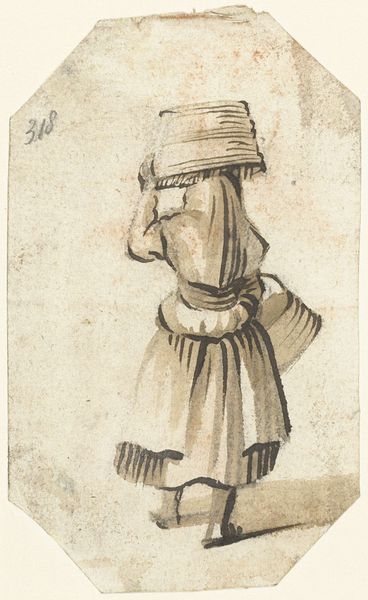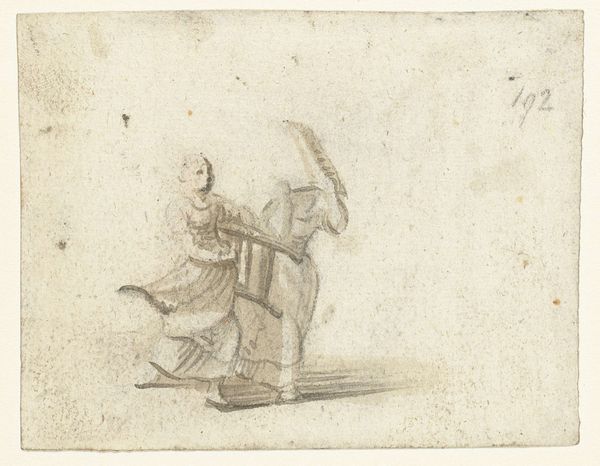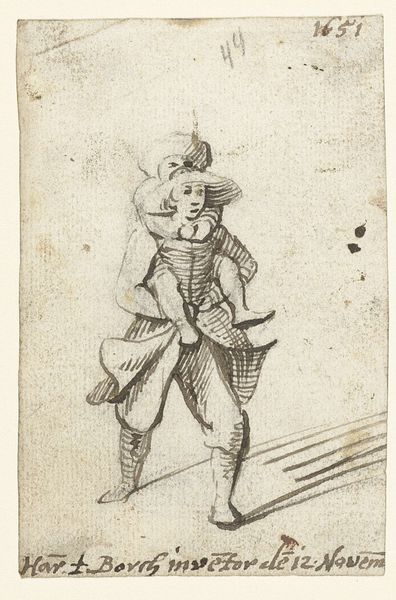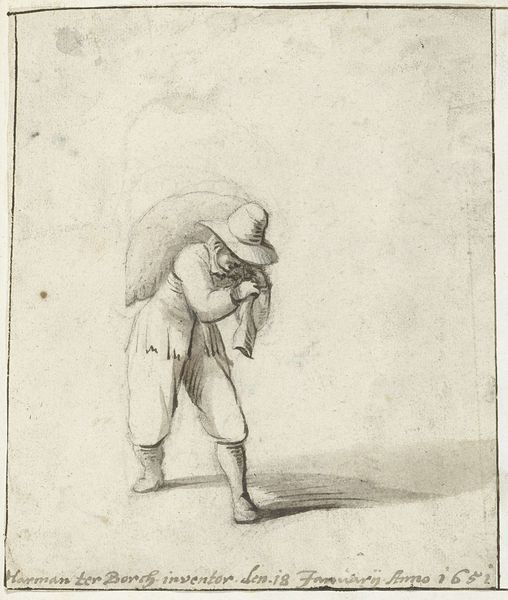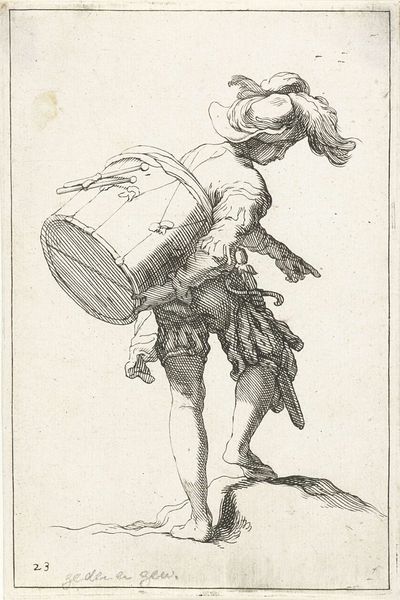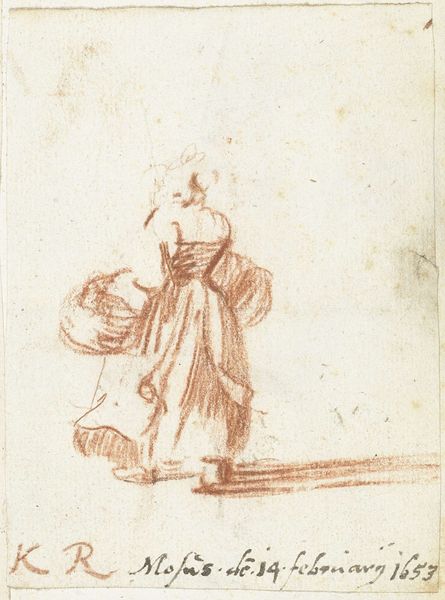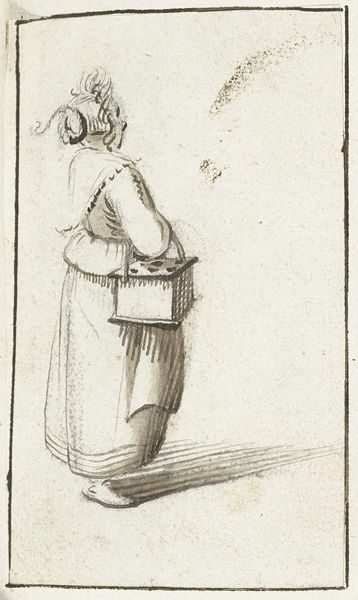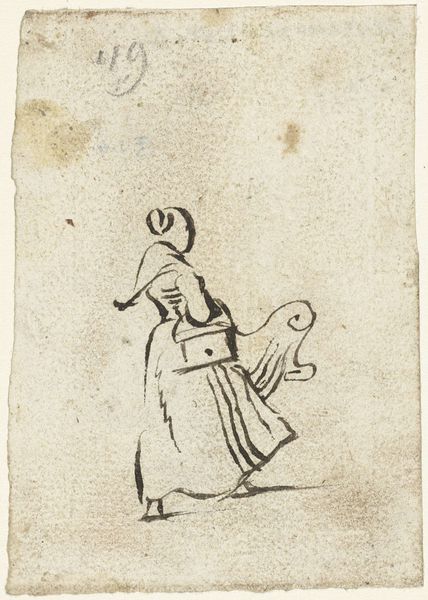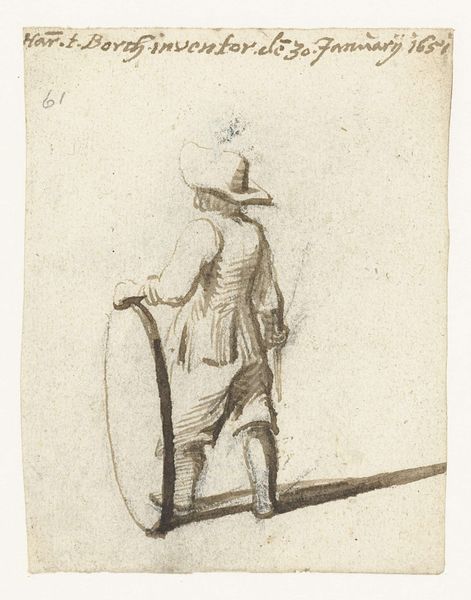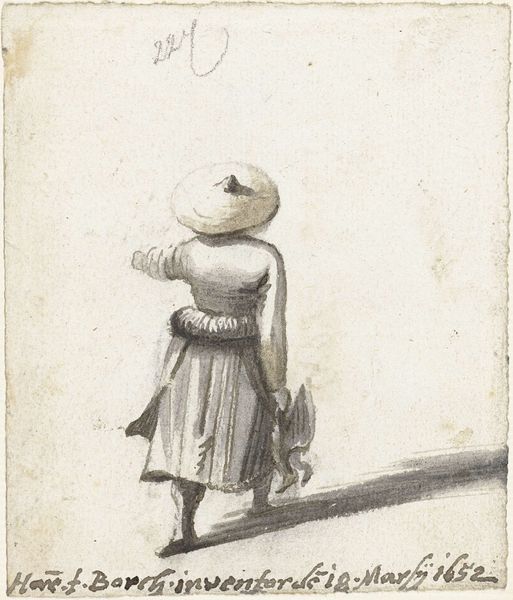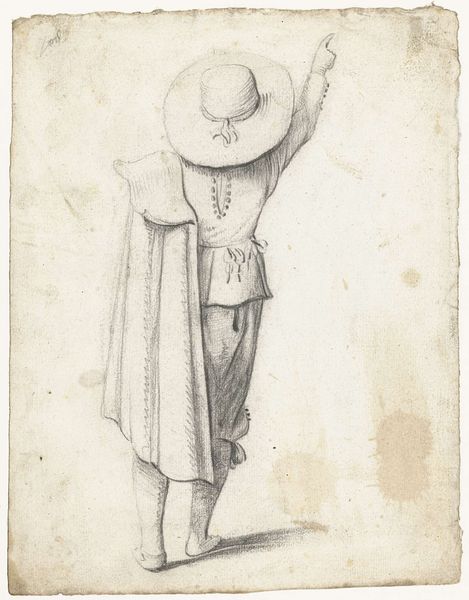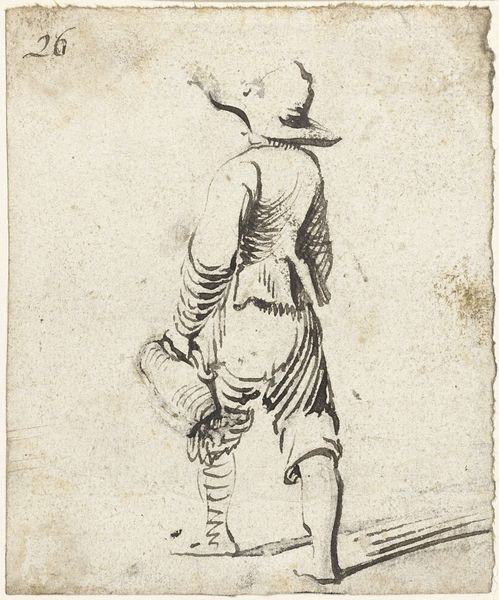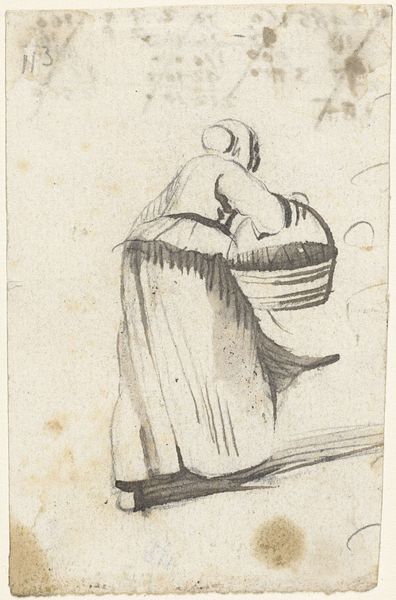
drawing, pencil
#
portrait
#
drawing
#
dutch-golden-age
#
figuration
#
pencil
#
genre-painting
Dimensions: height 212 mm, width 122 mm
Copyright: Rijks Museum: Open Domain
Curator: Harmen ter Borch's drawing, "Woman with Basket and Chicken, from Behind," possibly dating back to 1651, captures a quiet moment in everyday life, rendered with incredible economy. I am drawn in by how he evokes texture, weight, and narrative through material simplicity and the sheer physical act of applying pencil to paper. What is your first impression of this understated sketch? Editor: Hmm, I get a feeling of fleeting vulnerability. It’s unfinished, almost ghostly. She carries the weight of the world, literally with that basket and the squawking bird, but she’s also faceless, anonymous. It makes me wonder about all the overlooked laborers, their stories just hinted at. Curator: Precisely. And considering Borch's broader social circle and patrons, this piece may function as an acknowledgement of the labor and trade systems upon which their lives and art were contingent. The pencil drawing foregrounds an immediate and perhaps somewhat unglamorous form of image production, shifting focus away from the idealized painted image. The paper itself has age spots; its physical state adds to the story, you know? Editor: Definitely! And beyond the labor aspects, there's something so…human in its incompleteness. Those swift lines almost dance off the page! You can practically feel him capturing a quick glimpse of her. Not polished or perfected but full of raw energy. It reminds me how a sketch, an ‘imperfect’ form, can sometimes feel truer than a finished painting. Curator: Borch's skillful application of pencil allowed him to quickly record fleeting moments and human stories he witnessed. Notice his rendering of shadow and fabric? The way he creates volume through line weight and layering? There is incredible intentionality here, even in the seemingly unfinished passages. It’s not just observation, it’s translation—turning life into line. Editor: I agree; translation is spot-on. And by not overworking it, he's inviting *us* to fill in the blanks, to empathize with this woman and her cargo. To imagine her story beyond that single frozen moment. It transforms this unassuming little sketch into something so very affecting. Curator: The intersection of art, labour and the quiet realities of existence. Harmen ter Borch offers a surprisingly profound view. Editor: A fleeting glance, etched in time... leaving echoes that resonate.
Comments
No comments
Be the first to comment and join the conversation on the ultimate creative platform.
